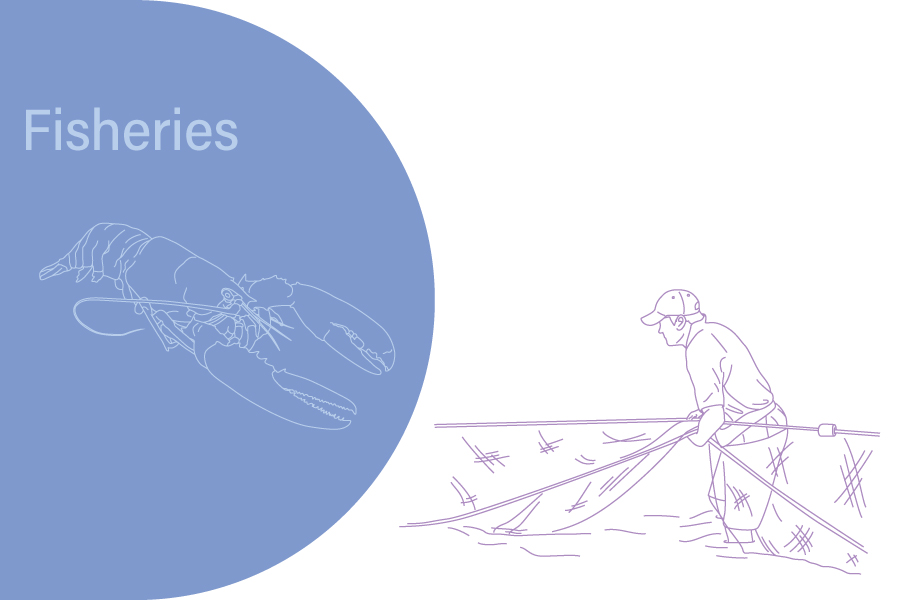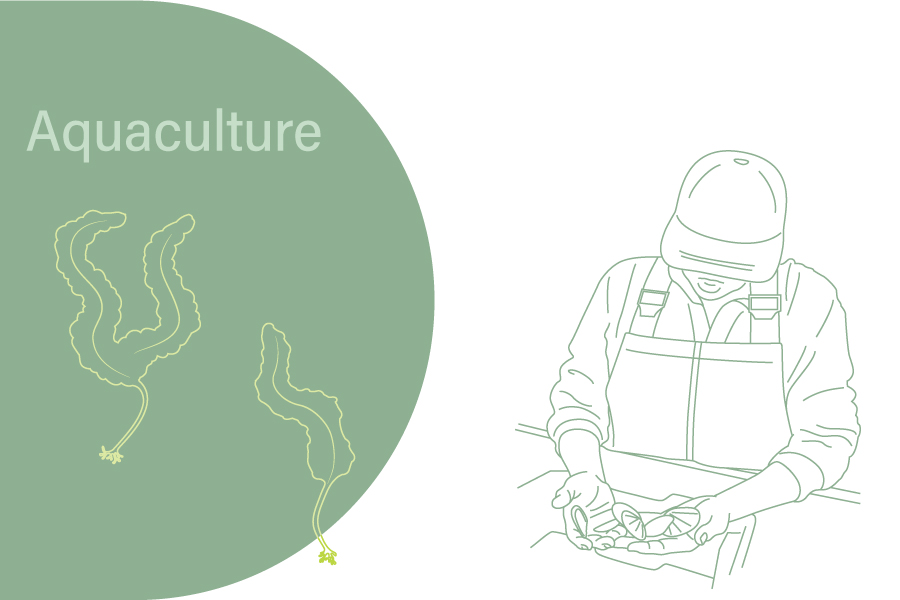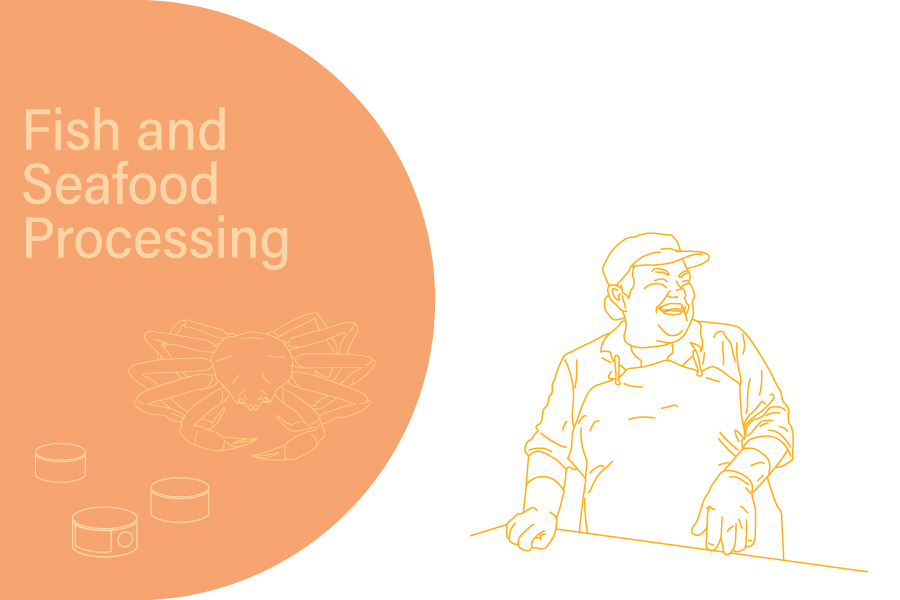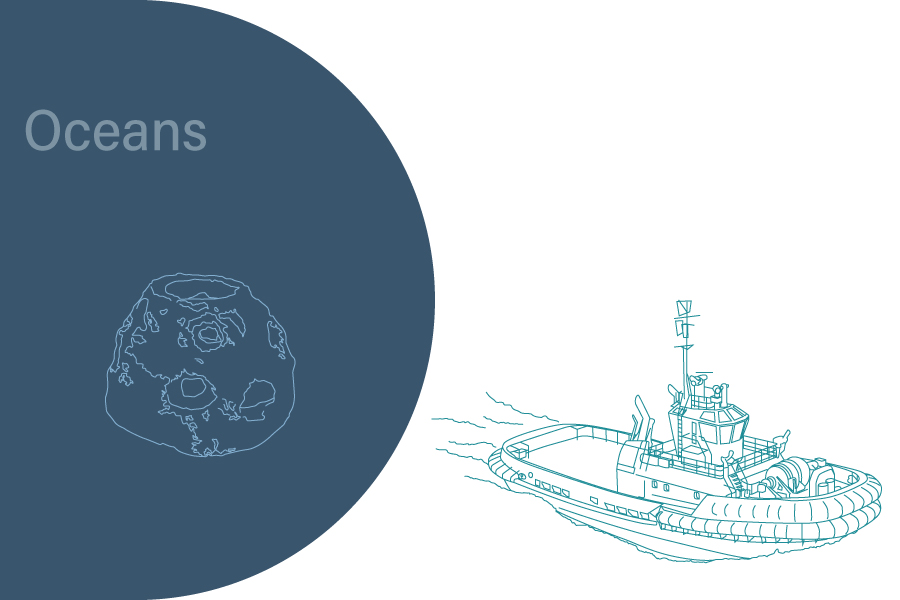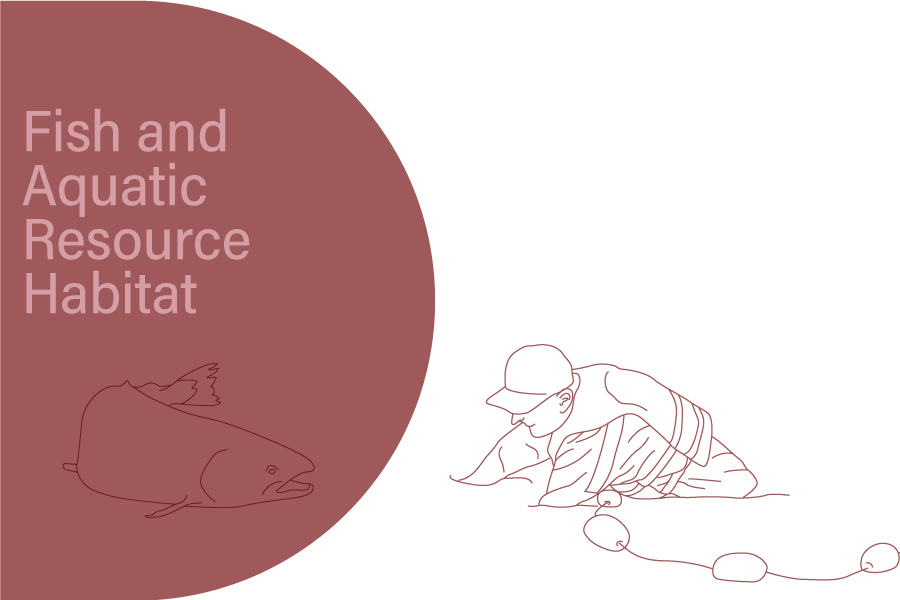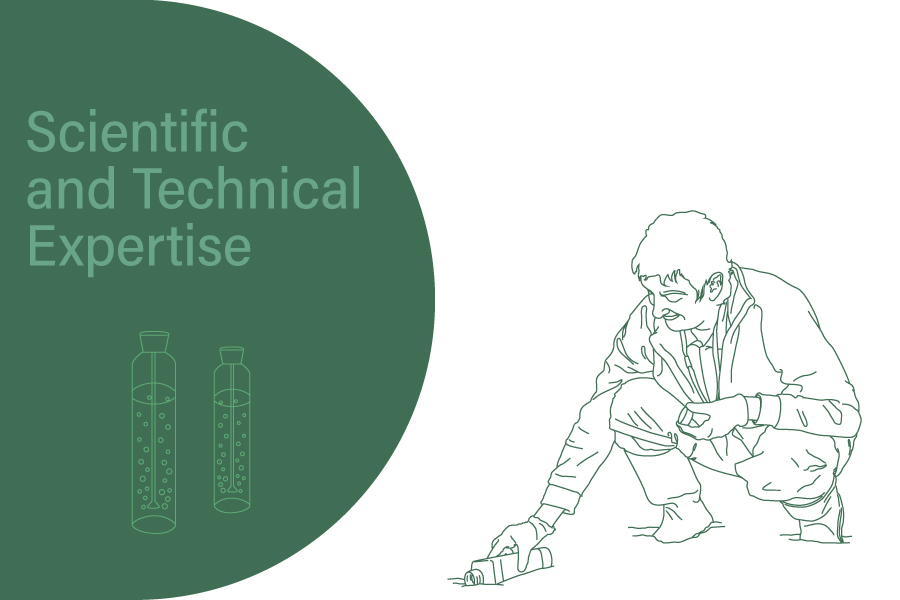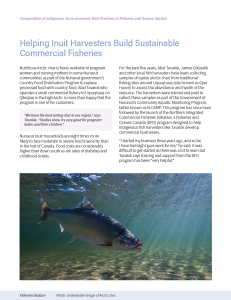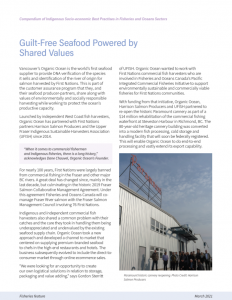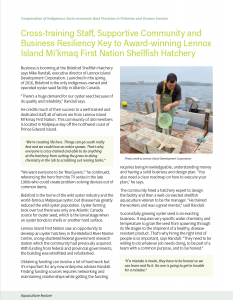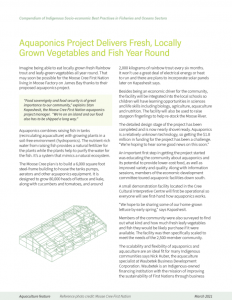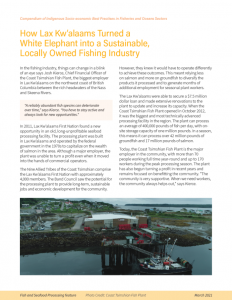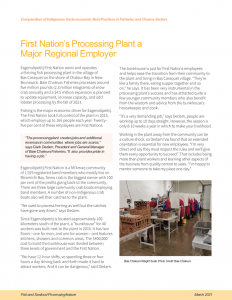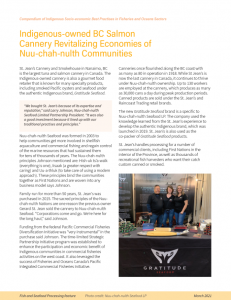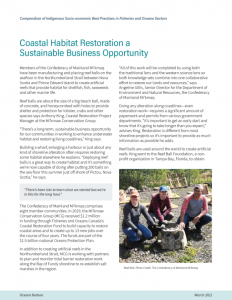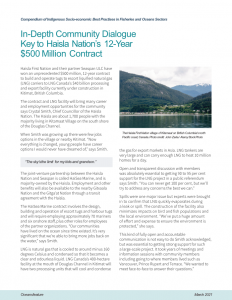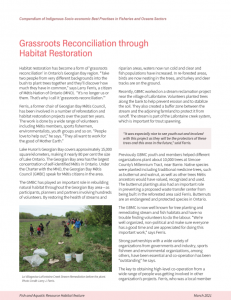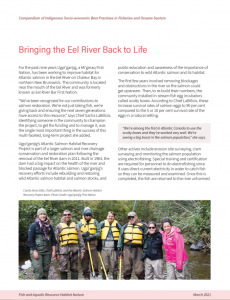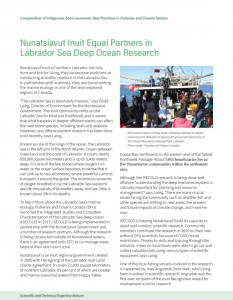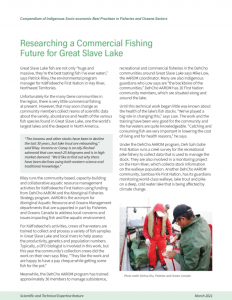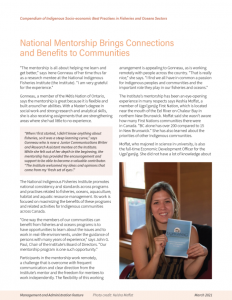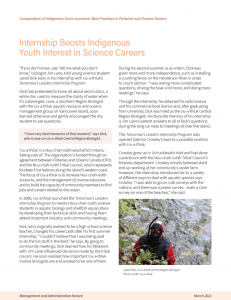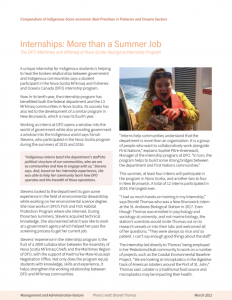Indigenous peoples are active participants in Canada’s fisheries and oceans sectors. Often, this participation involves having partners: joint ventures between communities or with industry, scientific collaborations among technical groups or with academia, and government-to-government arrangements. Some partnerships are linked to the commercial and community-based fisheries programs administered by Fisheries and Oceans Canada. Others are leveraging own source revenues, Indigenous benefit agreements or other federal, provincial or territorial programs.
Indigenous partnerships in fisheries and oceans sectors are advancing reconciliation, generating employment, contributing to stronger socio-economic outcomes for Indigenous peoples, and benefitting the Canadian economy as a whole. At the same time, these partnerships are ensuring sustainable resource use that is based on Indigenous knowledge and science—and the protection of fish stocks, habitat and oceans for the benefit of future generations.
The Compendium of Indigenous Socio-economic Best Practises in Fisheries and Oceans Sectors takes an in-depth look at some of these partnerships: identifying the circumstances or events which led to their creation, the steps taken by each partner to work together, and the benefits realized as a result. The features are organized into fisheries, aquaculture, processing, oceans, habitat, science, and administrative themes. They are also representative of Indigenous communities from across Canada.
Socio-economic best practises achieve social and economic goals using unique methods that can be maintained.
We enjoyed sharing each story with you since the completion of our compendium in March 2021. The full publication is now available (PDF).
